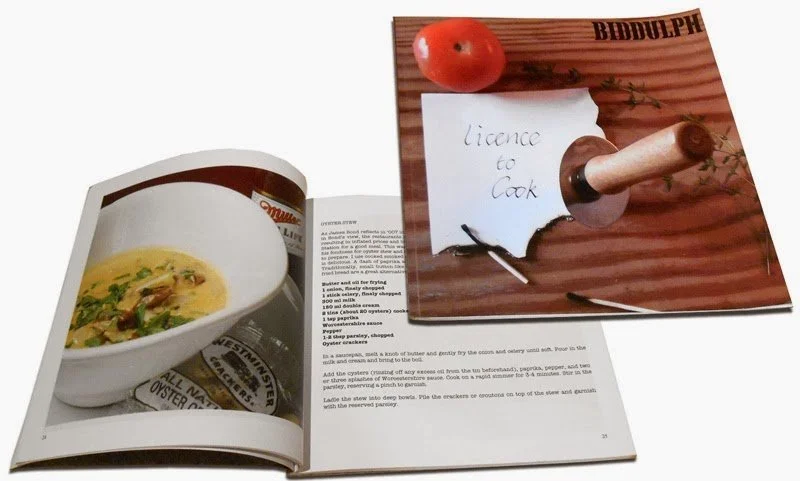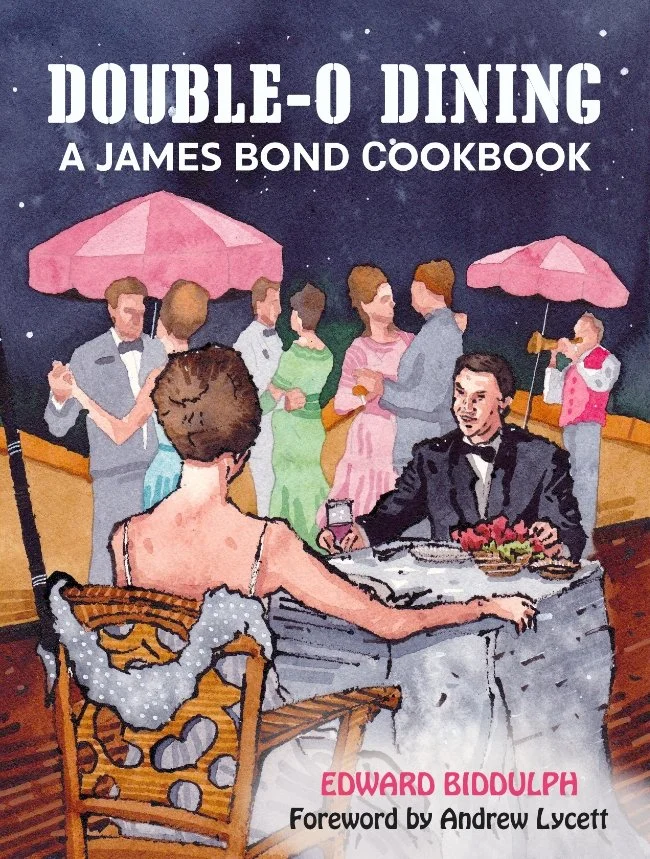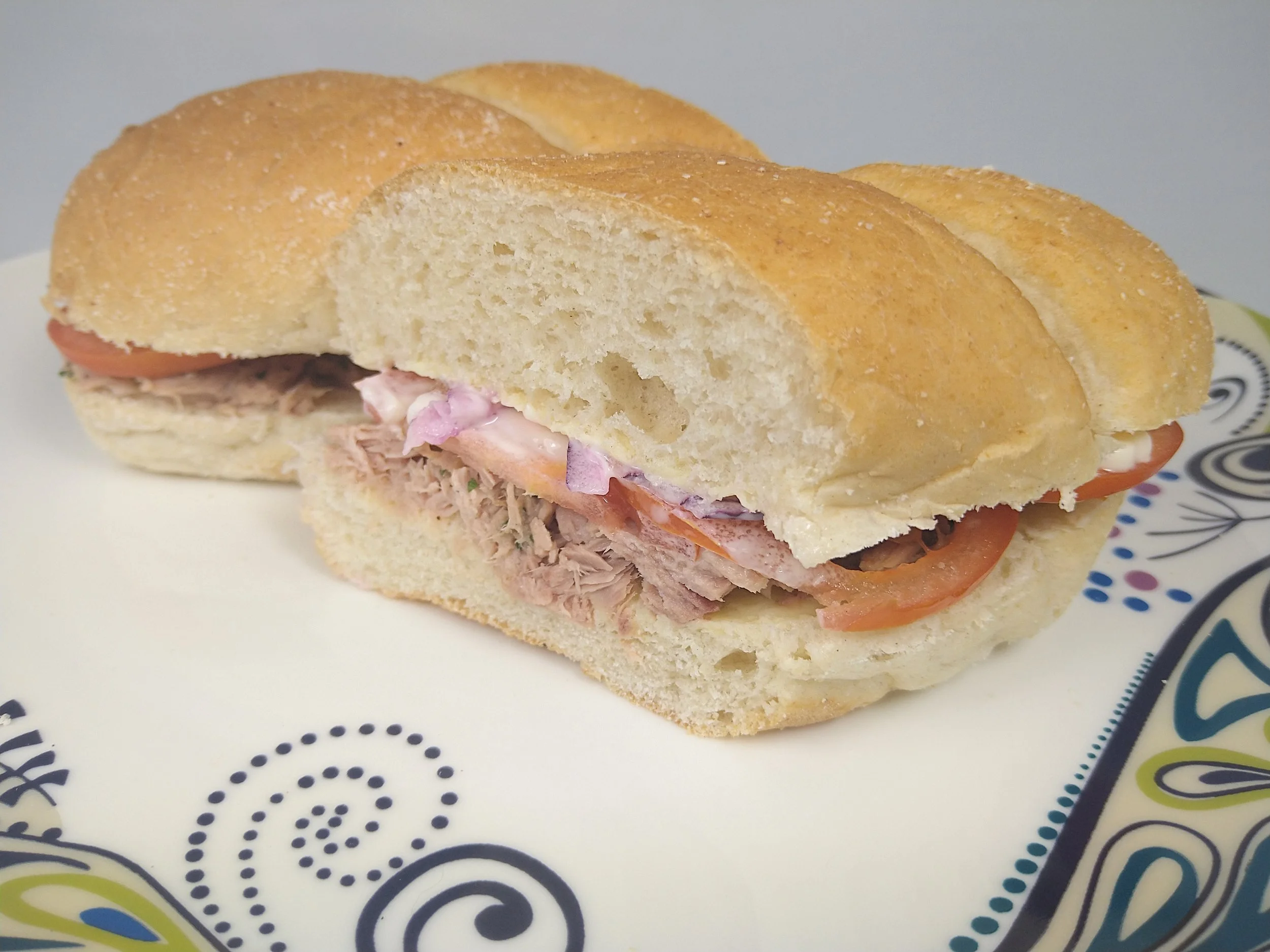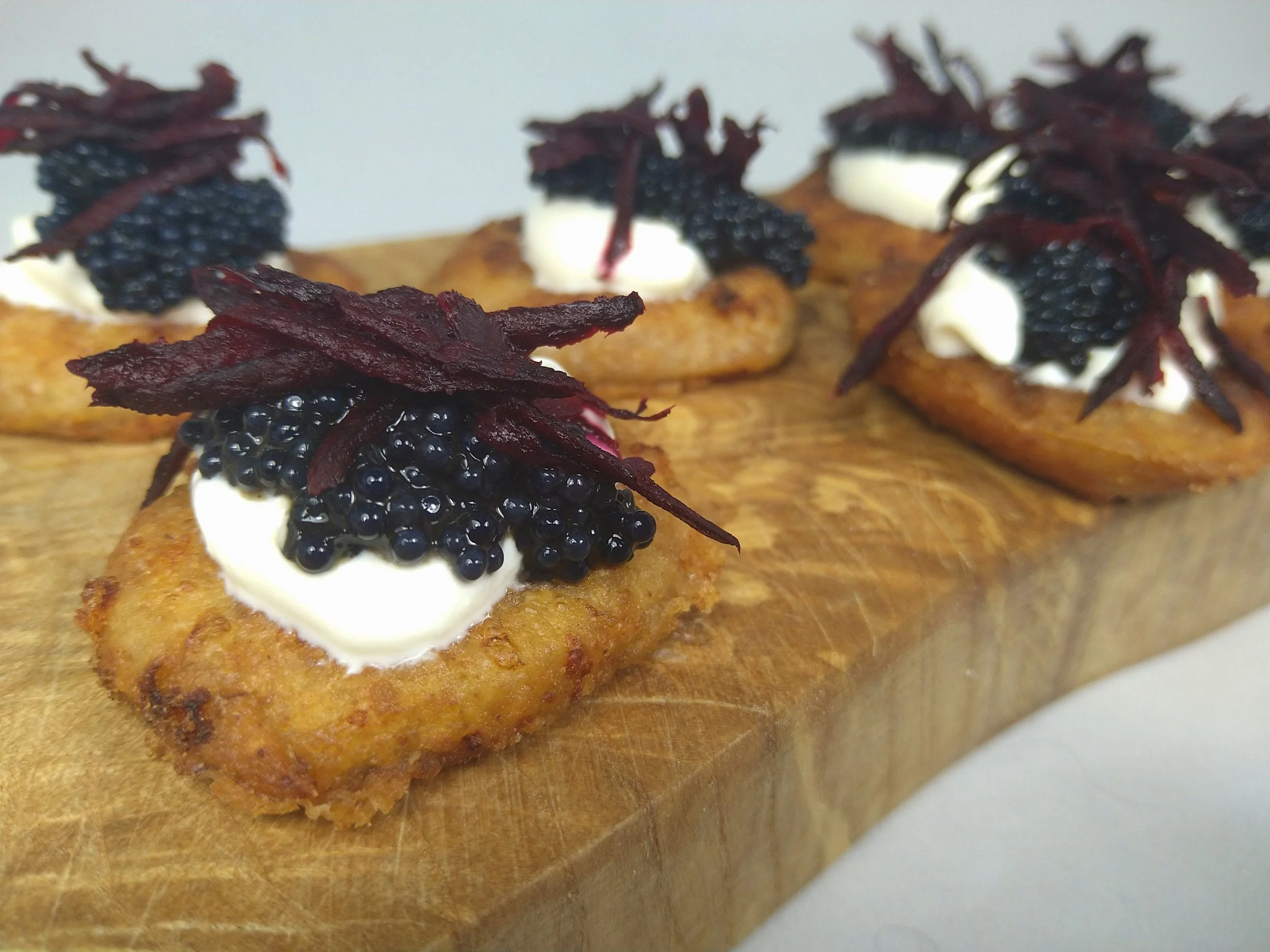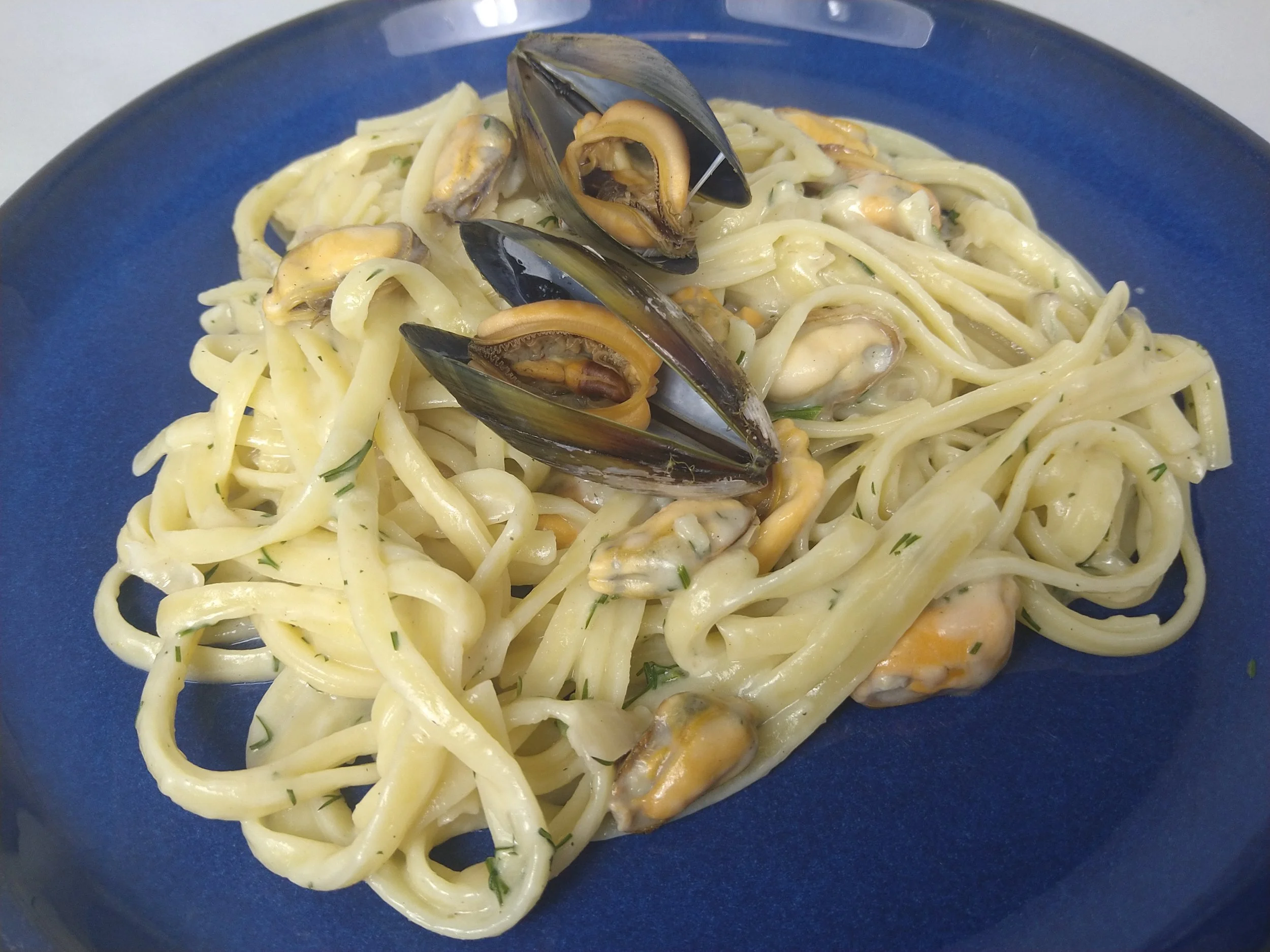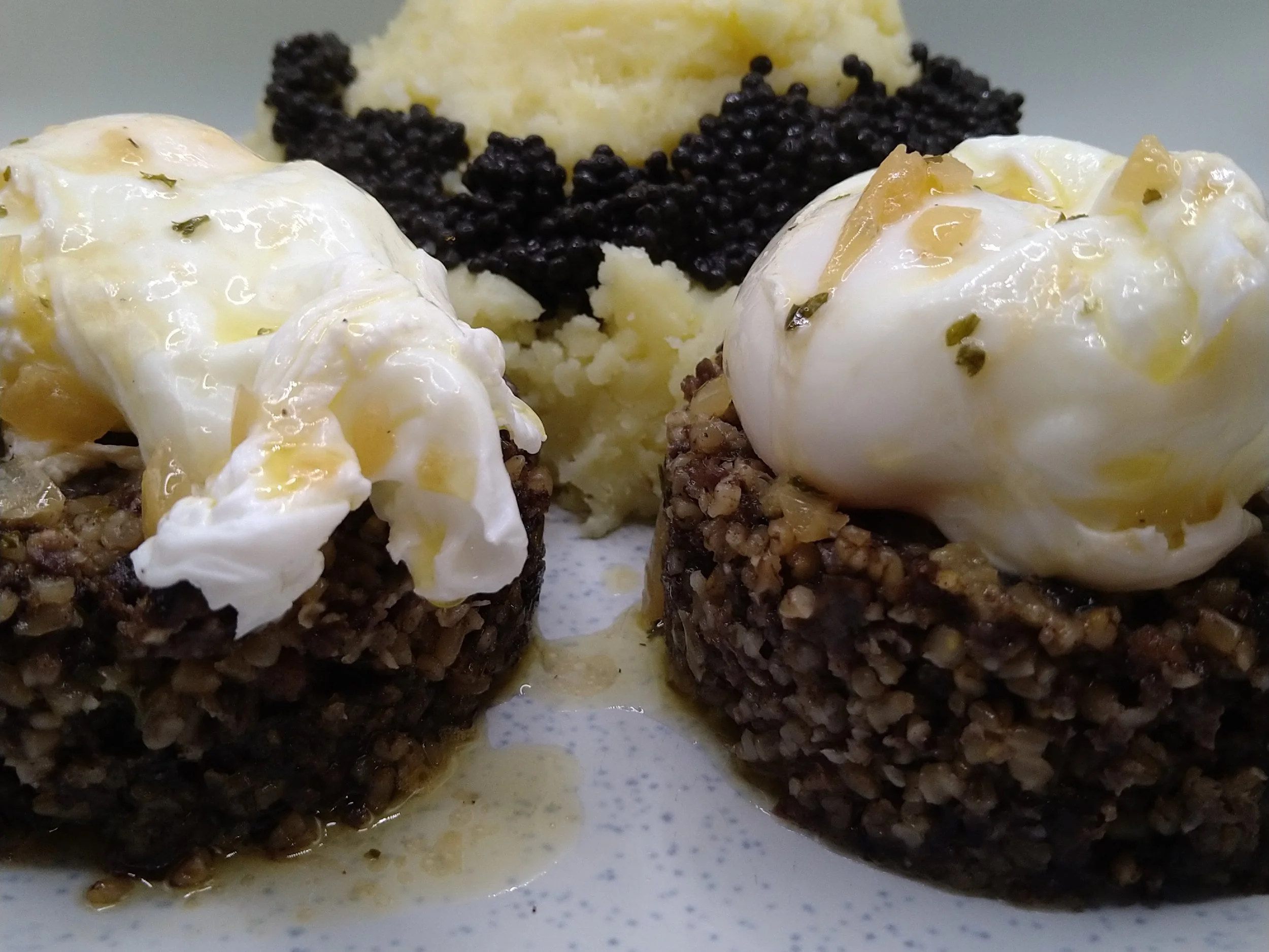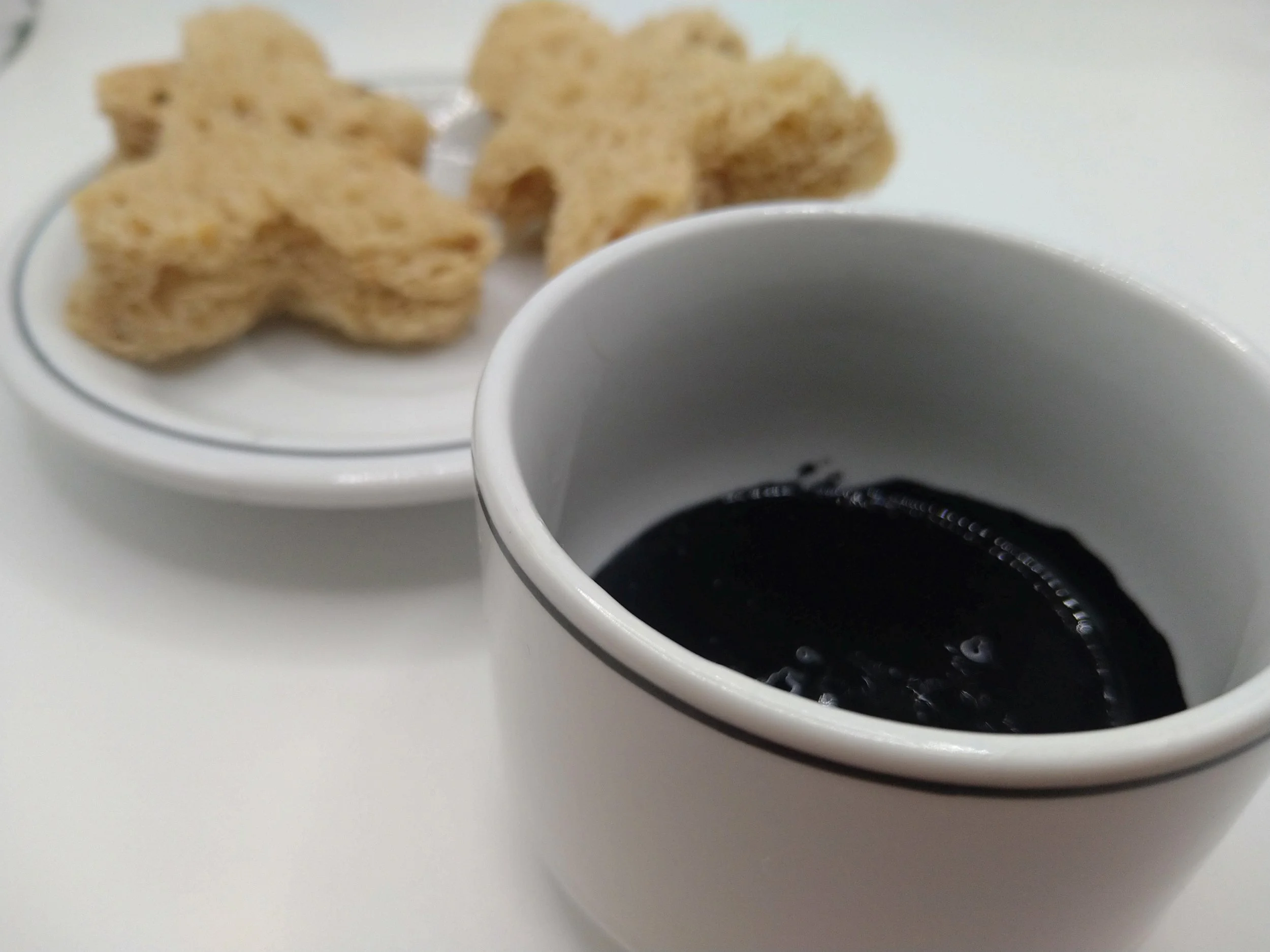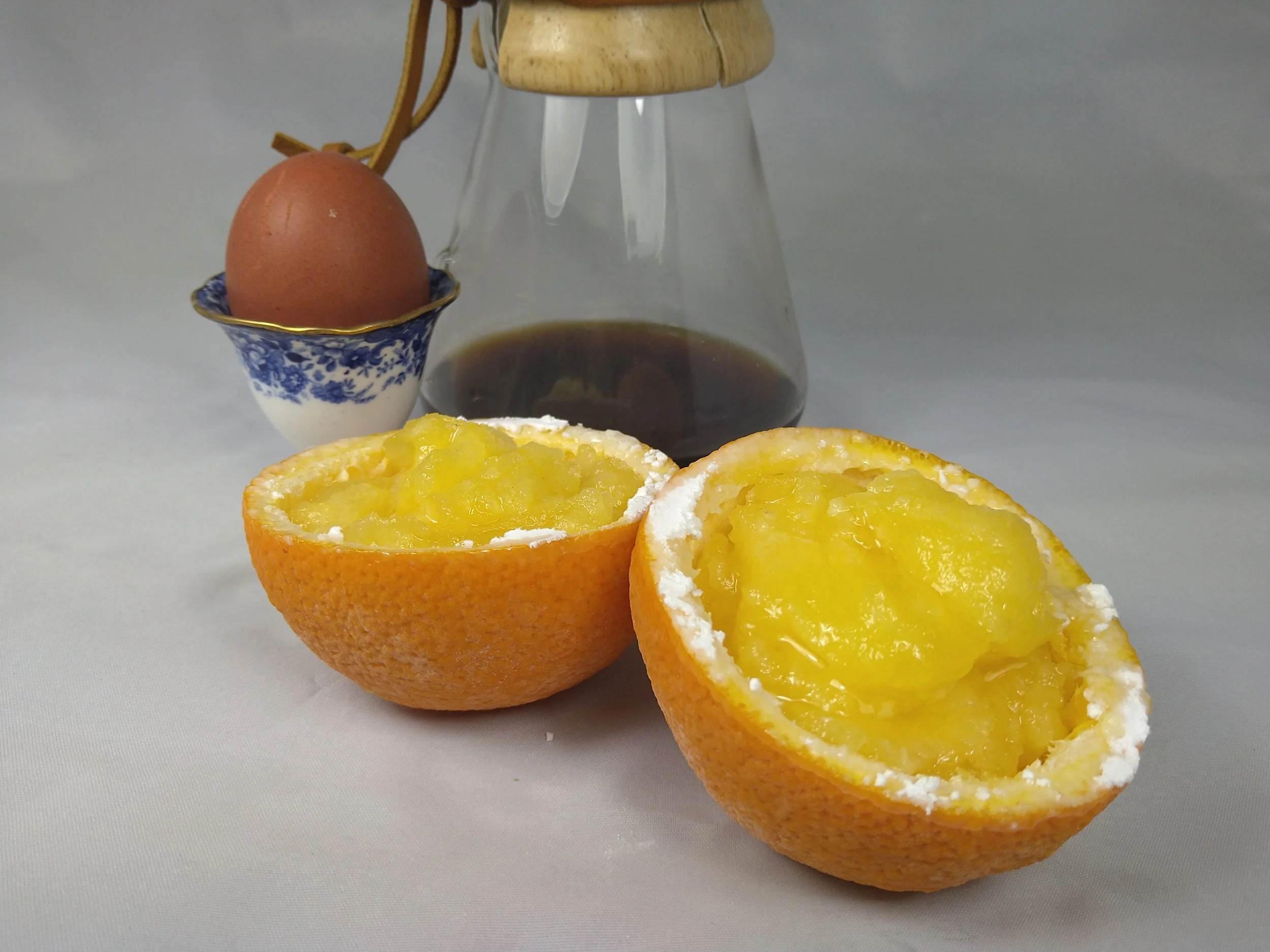Feasting like there’s no tomorrow: the ‘Donate Another Day’ menu
This year’s Licence to Queer UNICEF fundraiser ‘Donate Another Day’ features a smorgasbord of Brosnan-themed recipes created especially for the occasion by Bond food expert-without-equal Edward Biddulph.
Last year, more than 90 Bond fans raised over £2700 in a single day for Roger Moore’s beloved UNICEF. This year, we’re raising money for the charity by uniting around our love for the Bond films of another UNICEF ambassador: Pierce Brosnan. Find out more about the event here: https://www.licencetoqueer.com/blog/donate-another-day-our-2023-unicef-fundraiser
In addition to the 8 cocktail recipes, there are recipes for 8 unique dishes, 2 for each film.
They have all been produced by Edward Biddulph, author of the books Licence to Cook and Double-O Dining.
GoldenEye
Recipe 1: ‘That’s my lunch!’
You remember how much Xenia Onatopp enjoyed a good squeeze? Watching GoldenEye in 1995 after a (then) unprecedented six-year gap since the last Bond film, audiences had similar feelings of rapture. Bond was back. We were in double-O heaven and all was right with the world.
The scene in Q’s lab was a highlight. The interplay between Bond and Q in Q’s lab was sublime, and final exchange between them brought the house down. Bond spots a filled baguette, picks it up and examines it, wondering what mystery gadget it conceals. Q snatches the baguette off him. ‘Don’t touch that!’, Q exclaims, as if Bond had been casually handling a deadly device, ‘that’s my lunch’.
In the novelisation of the film by John Gardner, the baguette is described as six or seven inches of a French stick, cut in two and filled with tuna, tomatoes and onions. I’ve replicated the filling here, but I’ve replaced the baguette with a sub roll, a somewhat tenuous nod to the tagline on the posters that reclaimed Bond’s place at the top: No limits. No fears. No substitutes.
Serves 2
2 sub rolls
1 can tuna chunks
2 salad tomatoes
1 red onion
1 tsp finely chopped parsley
Mayonnaise, to taste
Pinch black pepper
Butter
First, prepare your ingredients. Open the can and drain the tuna chunks. Transfer the tuna to a bowl and mix with the pepper and parsley. Peel the onion and very thinly slice it to produce rings, then thinly slice the tomatoes. Slice and butter the subs.
Next, assemble your sub. Spread the tuna across the bottom half of the sub. Lay the tomato slices on top of the tuna, then place the onion rings on top of the tomatoes. Spoon or squeeze the mayonnaise across the top of the filling. It’s up to you how much mayonnaise you use, but I tend to be quite generous with mine.
Recipe 2: ‘Borscht for brains… with a twist’
Boris Grishenko isn’t short of an insult or two: ‘slug head!’, ‘moron’, and, as he taunts his colleague Natalya Simonova about cracking his password, ‘borscht-for-brains.’ The last refers of course to the famous Ukrainian beetroot soup, and it’s to Ukraine, home of the Cossacks, that I’ve gone for inspiration for the recipe here that would be ideal for cocktail parties and receptions hosted by Alex Trevelyan, Lienz Cossack and head of the Janus crime syndicate.
What do we expect from a Cossack? Well, one thing we might expect are halushky, cheese dumplings that, according to a poem by Ivan Kotliarevsky (1769–1838), are served with caviar, borscht, sauerkraut, and mushrooms, among other food items.
Traditionally, the dumplings are cooked in gently simmering water, but in my version, I have made them into canapé-sized rounds to be fried. I suggest topping the canapés with caviar, sour cream (a combination that would meet Dr Christmas Jones’s approval), and, retaining the borscht connection, slivers of beetroot.
The halushky recipe has been adapted from one found on the ‘Etnocook: Traditional Ukrainian Recipes’ website.
Makes many canapés
For the halushky:
100g/3½ oz sifted wholemeal flour
300g/10½ oz cottage cheese
50ml/1½ fl. oz vegetable oil
1 egg, beaten
Water (between approx. 10ml/⅓ fl. oz and 50ml/1½ fl. oz)
Pinch salt
Oil for frying
For the topping:
Caviar (the most expensive you can afford, but lumpfish will do)
Beetroot, peeled and cut into thin slivers (a zester is ideal)
Sour cream
To make the halushky, put all the ingredients except the water into a mixing bowl. Mix the ingredients together, then add and mix in as much water as required – a little at a time – to make a dough stiff enough to roll. If the dough is too wet for rolling, add more flour.
Transfer the dough to a floured surface, sprinkle a little flour on the dough and rolling pin, then roll the dough until it is about ½ cm thick. Cut rounds approximately 5cm in diameter. If you don’t have a suitably sized cookie cutter, use an eggcup. (The dough should make a lot of halushky. If you don’t need very many, cut a portion of the dough and use that, covering the rest in cling-film and keeping it in the fridge or freezer for another occasion.)
Pour enough oil in a frying pan to cover the base. Heat the oil over a medium to high heat, then fry the halushky rounds until they’ve turned a golden colour, about 1 to 2 minutes on each side. Transfer the rounds to absorbent paper, then place them on a serving plate ready for assembly.
To create each canapé, put half a teaspoon of sour cream onto the halushka. Top the sour cream with half a teaspoon of caviar, then balance a pinch of beetroot strips on top of that.
Tomorrow Never Dies
Recipe 1: ‘Cunning linguini’
As Moneypenny rightly observes, James Bond always was a cunning linguist. We know from You Only Live Twice that Bond speaks Japanese and from For Your Eyes Only that he speaks at least a little Italian and Spanish. And if saying ‘Who is your floor’ in a Dutch accent in Diamonds Are Forever counts as having any degree of fluency, then that’s another language under his belt. In Tomorrow Never Dies, Bond reveals that he has some German, and of course we intrude on his language lesson in Oxford, brushing up on a little Danish.
Moneypenny’s pun is too good to resist and has provided the inspiration for this dish. Seafood and pasta are a classic combination, and without being too anatomical, I feel that mussels are the most appropriately vulval of all the shellfish. The dill adds a little Danish flavour to the proceedings.
Serves 2
150g/5 oz dried linguini
1kg/2.2lb fresh mussels
White wine
15g/½ oz butter
15g/½ oz plain flour
1 shallot, peeled and finely chopped
1 clove garlic, peeled and finely chopped
100ml/3.3 fl. oz stock
2 tbsp double cream
1 tbsp finely chopped dill
Salt
Fill a large saucepan with salted water. Bring the water to the boil, add the linguini, cover the pan, bring the water back to the boil, then turn the heat to low and allow the pasta to gently simmer for 10–12 minutes. (I usually switch the heat off. The pasta cooks just as well in the residual heat, and it saves on energy.)
While the pasta’s cooking, pour enough white wine into another large saucepan to cover the base of the pan to a depth of 1cm. Add a good pinch of salt, cover, and bring the wine to a boil. Remove the lid, tip in the mussels (I don’t worry too much about scrubbing mussels these days, but if you can’t contemplate the idea of barnacles and beards, then by all means give the mussels a clean before you start preparing the dish), re-cover, turn the heat to medium and cook for about five minutes.
When the five minutes are up, drain the mussels over a bowl. Take 100ml of the liquid, which has become the stock. Remove the mussels from the shells, placing the meat in a bowl, and discarding any unopened shells or mussels with broken shells. Put a plate or other lid on top of the bowl to keep the mussels warm. Keep three or four mussels in the shell for a garnish.
In a small saucepan, melt the butter over a medium heat. Add the shallot and garlic and fry for a minute or two until the shallot has softened. Stir in the flour, ensuring that the flour is fully absorbed. Pour in the stock and stir until you have a smooth sauce. Reduce the heat to low or remove the pan from the heat and stir in the double cream and dill. Return to the low heat and allow the sauce to heat through. (If the sauce is too thick, stir in a little more stock.) Remove the pan from the heat and put to one side.
Drain the pasta and return the pasta to the saucepan. Add the mussels (except the ones in the shell) and the sauce. Toss until the pasta is coated and the mussels are reasonably evenly distributed. Dish the pasta out onto plates and put a couple of mussels in the shell on top of each portion.
Recipe 2: ‘We dine together’
Tomorrow Never Dies has been described as the biggest slice of cheese since a slice weighing 135 grams from Cairo entered the Guiness World Records. (Actually, I don’t have the precise quote, but someone must have said it.)
It’s the film’s essential cheesiness that has inspired this food choice. That, and the final line of Elliot Carver’s muscular henchman, Mr Stamper, memorably played by Götz Otto: ‘We die together, Mr Bond.’ Here, then, are some suggestions for a sharing platter of German meats and cheeses.
What you put on your sharing platter depends on availability. For me, a visit to my local supermarkets yielded two types of blue cheese – Cambozola and Montagnolo Affine – and five types of sausage: Brunswick ham, peppered salami, pepperoni, Extrawurst, and Frankfurters. There are, of course, many more varieties. On the cheese front, one can also have a semi-soft Trappistenkäse, a crumbly Edelpilz, or a hard Allgäuer Bergkäse. As for German sausage, the choice is very wide, Braunschweiger, Knackwurst, Bockwurst, Cervelas, Mettwurst, and Landjäger being just a few of the many types produced.
Whatever meats and sausages you manage to find, accompany the selection with bread – ideally Bond’s usual choice of rye – and pickles. And if you have, as I do, a set of cheese knives that look every bit as lethal as Mr Stamper’s Chakra torture implements, then by all means set those out to impress your guests.
The World Is Not Enough
Recipe 1: ‘Haggis Sophia’
Sometimes one source of inspiration is not enough, and when it came to devising a dish to celebrate The World Is Not Enough, Pierce Brosnan’s third and finest entry in the Bond series (arguably), it came from all directions.
The Scottish setting of Sir Robert King’s funeral and MI6’s headquarters makes haggis a natural choice. The name is of course a pun on the Hagia Sophia, perhaps the best-known landmark in Istanbul, a city that James Bond and Dr Christmas Jones visit at the end of their adventure together. (And I haven’t forgotten Bond’s earlier excursion to the mosque in From Russia With Love.) And if that isn’t enough, the dish honours Sophie Marceau (Elektra King), not just in the name, but with one of the elements of the dish: sauce Bercy, which originated in Sophie Marceau’s home city of Paris.
A dish fit for a King, as I hope you’ll agree.
Serves 2
1 small haggis
2 eggs
For the sauce:
1 shallot, peeled and finely chopped
120ml/½ cup white wine
2 tbsp butter
1 tsp lemon juice
1 tsp finely chopped parsley
Pinch salt and pepper
Optional:
Mashed potato
Caviar
Cook the haggis as instructed on the packaging. About ten minutes before the end of the cooking time (if boiling or oven-cooking the haggis) or as the haggis is cooking in the microwave, fill a large saucepan with water, place on a high heat and bring to the boil.
Meanwhile put the wine and shallot in a small saucepan and bring the wine to a boil over a high heat. Reduce the heat to medium and allow the wine to simmer until it has reduced by approximately three quarters. Add the butter, lemon juice and parsley and stir until the ingredients have combined into a smooth sauce. Remove from the heat.
When the water in the large saucepan is boiling, crack an egg into a small bowl and carefully tip the egg into the water. (I find that in following this method one avoids scalding oneself as one cracks the egg over the saucepan. Also, I don’t tend to add vinegar or swirl the water around, as is often recommended for poached eggs. I’ve found it makes no difference to the cooking.) Repeat with the second egg. Turn the heat to medium and allow the eggs to poach for about 3 minutes.
As the eggs are poaching, turn the haggis out onto a plate. Carefully spoon the haggis onto two dinner plates to create small towers. Use a chef’s ring, if you have one. Lift the eggs from the pan using a slotted spoon and gently place the eggs on top of the haggis, one on each tower. Spoon the sauce generously over the egg and haggis.
If desired, fashion a dome of mashed potato on each plate and surround with caviar.
Recipe 2: ‘Zukovsky takes a dip’
James Bond once said that the trouble with ordering caviar was not getting enough caviar but getting enough toast to go with it. I disagree. I think the trouble is getting the caviar to stay on the toast. Well, I’ve solved the problem: you mix the caviar with squid ink. Like many scientific innovations, my discovery is serendipitous. I wanted to recreate the silky, oily appearance of the caviar into which Valentin Zukovsky sinks while escaping the helicopter saws, which are destroying his factory in The World Is Not Enough. After an unsuccessful experiment with olive oil, I tried squid ink and found that it gave the caviar the necessary viscosity and sheen.
The combination makes an excellent dip for the toast, but I discovered something else: it spreads well too. James Bond is also fond of caviar sandwiches. With addition of the ink, the caviar becomes a spreadable sandwich filling. And why not try it as a condiment for your chips? It makes a luxury alternative to salt.
Serves 2
1 generous tsp caviar (lumpfish is acceptable)
8g/0.3 oz squid (cuttlefish) ink
Bread for dipping
Spoon the caviar into a small receptable, such as an espresso cup or saucer. Add the squid ink and carefully stir to mix.
For that special touch, use a person-shaped cookie cutter to cut a Zukovsky-like figure out of the bread.
Die Another Day
Recipe 1: ‘Death for Breakfast’
Miranda Frost has James Bond’s number: ‘I know all about you, 007. Sex for dinner, death for breakfast.’ That just about sums Bond up. (And kudos to the screenwriters for borrowing a chapter title from Ian Fleming’s On Her Majesty’s Secret Service.) But what would death for breakfast look like? We know from the books that Bond likes a drop of orange juice for breakfast, and given the icy themes of Die Another Day – Frost, ice palace, diamonds – I thought that an orange sorbet, laced with a ‘deadly’ vodka martini, would fit the bill.
Serves 2
150ml/5 fl. oz. orange juice or approx. juice of 1 large orange (retain ‘shell’ if using fresh orange)
80g caster sugar
150ml/5 fl. oz. vodka martini (mixed to taste)
1 tsp glucose syrup
1 tsp lemon juice
To garnish:
White of one egg
Caster sugar
Put the sugar and orange juice in a pan and melt the sugar over a medium heat. Stir in the glucose syrup, then add the lemon juice and vodka martini. Stir, bring the liquid to the boil, then reduce to a simmer. Allow to simmer for about 5 minutes.
If you squeezed the juice out of a fresh orange, while the liquid is simmering, carefully remove the remaining flesh and pith from the skin of the orange. Rinse the orange ‘shells’ and put to one side.
Pour the liquid into a container (a plastic food container or old ice-cream tub will do). Allow the liquid to cool, then cover the container with a lid or cling film and place in the freezer. Put the orange ‘shells’ in the freezer as well. Freeze the sorbet for at least 4–5 hours and preferably overnight, removing the container every so often to stir the sorbet with a fork and break down the crystals.
To serve, dip the rims of the orange ‘shells’ in a bowl or saucer of egg white, then dip the rims in a bowl or saucer of caster sugar. Divide the sorbet between the orange ‘shells’, or small bowls if not using a fresh orange.
Recipe 2: ‘Keeping your tip up’
Die Another Day is packed with so many double entendres, one would be forgiven for thinking that one was watching Carry On Spying. At Blades, the innuendoes are flying around faster than the foils with which Miranda Frost and Gustav Graves are fencing. ‘I see you handle your weapon well.’ ‘I don’t like cock fights.’ ‘I have been known to keep my tip up.’ Talbot Rothwell, eat your heart out.
The last one, a parry delivered with Bond’s usual aplomb, gave me the idea for this dish: asparagus tips served with a hollandaise-type sauce. The sauce has a twist – a dollop of American-style mustard in honour of Madonna’s game performance as fencing instructor Verity. En garde!
Serves 2
12g asparagus tips
For the sauce:
2 egg yolks
1 tsp lemon juice
1 tsp cold water
30g/1½ oz. butter
Pinch salt and black pepper
½– 1 tsp American-style mustard
Cut off the very ends of the asparagus tips and place in a saucepan or a deep, lidded frying pan. Cover the asparagus with water, place a lid over the pan, and bring the water to the boil over a high heat. Reduce the heat and allow the asparagus to simmer for 3–5 minutes or until cooked. Drain and keep warm. (Alternatively, the asparagus tips can be steamed.)
While the tips are cooking, quarter-fill a small saucepan with water, place it over a medium heat and bring the water to the boil. Reduce to a very low heat, so that only steam emanates from the water. Fill a bowl or small basin with the teaspoon of water, the lemon juice, salt and pepper, a small piece of butter, and the egg yolks. Sit the basin on top of the saucepan and whisk the ingredients to create a smooth mixture, taking care not to allow the water to come to a simmer.
Add the remaining butter bit by bit, whisking each small portion fully into the sauce before adding another knob. Once all the butter has been incorporated, continue to whisk until the sauce has thickened to soft peaks. This should take between 5 and 10 minutes.
Take the bowl off the heat, then stir in the mustard (I found that half a teaspoon is enough for me but add a little more if you like it hot!). Transfer the sauce to a small bowl for serving.
